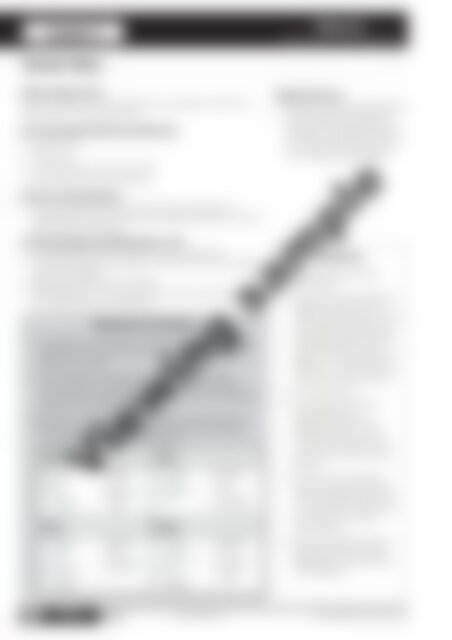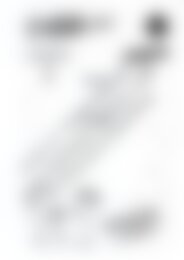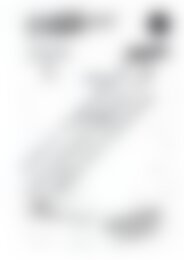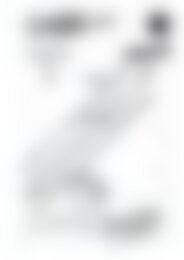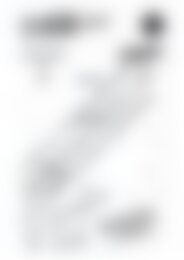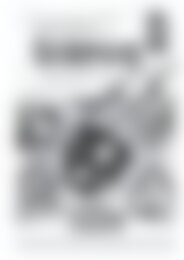PR-6170RUK Science A STEM Approach - Primary 1
Create successful ePaper yourself
Turn your PDF publications into a flip-book with our unique Google optimized e-Paper software.
Lesson 2<br />
Materials<br />
MATERIALS HAVE <strong>PR</strong>OPERTIES<br />
Teacher Notes<br />
<strong>Science</strong> Inquiry Focus:<br />
What do objects that are made from wood, glass, metal and<br />
rubber look, smell and feel like?<br />
Skills Development/Working Scientifically:<br />
• Questioning<br />
• Observing<br />
• Investigating and experimenting<br />
• Recording and communicating<br />
<strong>Science</strong> Learning Outcome:<br />
• Pupils use their five senses while observing objects to<br />
investigate the basic properties of objects made from wood,<br />
glass, metal and rubber.<br />
Technology/Engineering/Mathematics Links:<br />
• Sorting objects by the material they are made from.<br />
• Using mathematical language to describe thickness, weight<br />
and size of objects.<br />
• Exploring properties of materials.<br />
• Participating in an online interactive activity sorting objects by<br />
the material they are made from.<br />
Background Information<br />
• All objects are made from materials that have observable<br />
properties. These properties make the material useful for<br />
different purposes.<br />
• The properties of a material describe its size, shape,<br />
colour, texture, malleability, flexibility, strength, odour,<br />
sound, density, absorbancy or transparency. See pages 80<br />
and 81 for more detail.<br />
• Materials may have opposing properties depending on<br />
the object; for example, a steel bar is strong and rigid<br />
but aluminium foil is weak and flexible.<br />
Wood<br />
• strong<br />
• hard<br />
• dull<br />
• rough/<br />
smooth<br />
Metal<br />
• strong/<br />
weak<br />
• hard<br />
• dull/shiny<br />
• rough/<br />
smooth<br />
• flexible/<br />
rigid<br />
• coloured<br />
• natural<br />
smell<br />
• flexible/<br />
rigid<br />
• coloured<br />
• no smell<br />
Glass<br />
• strong/<br />
weak<br />
• hard/soft<br />
• shiny<br />
Rubber<br />
• strong/<br />
weak<br />
• hard/soft<br />
• dull<br />
• rough/<br />
smooth<br />
• smooth<br />
• rigid<br />
• seethrough<br />
• no smell<br />
• flexible/<br />
rigid<br />
• coloured<br />
• natural<br />
smell<br />
Assessment Focus:<br />
• Monitor the pupil's participation<br />
and observation skills while<br />
they explore the properties of<br />
materials, including the pupil's<br />
use of descriptive words and<br />
use of sight, smell and feel.<br />
Resources<br />
• One digital camera for<br />
teacher use<br />
• A selection of five different<br />
objects made from each<br />
material—wood, glass, metal<br />
and rubber. A list of easily<br />
accessible objects for each<br />
material can be found on<br />
page 76. These need to be<br />
placed in a cardboard box<br />
so pupils cannot see them.<br />
• Four hula hoops<br />
• An enlarged set of the<br />
property cards on<br />
pages 80 and 81 These<br />
should be coloured, cut<br />
out and laminated prior to<br />
the lesson for use in other<br />
lessons.<br />
• Five sets of the property<br />
cards on pages 46 and 47.<br />
These should be coloured,<br />
cut out and laminated prior<br />
to the lesson for use in<br />
other lessons.<br />
• Online interactive activity—<br />
Grouping and Changing<br />
Materials at <br />
Viewing sample<br />
78 <strong>Science</strong>:<br />
A <strong>STEM</strong> AP<strong>PR</strong>OACH<br />
Infants 978-1-912760-14-5 Prim-Ed Publishing – www.prim-ed.com


